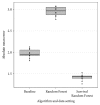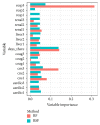Random Survival Forests for Predicting the Bed Occupancy in the Intensive Care Unit
- PMID: 27818706
- PMCID: PMC5081505
- DOI: 10.1155/2016/7087053
Random Survival Forests for Predicting the Bed Occupancy in the Intensive Care Unit
Abstract
Predicting the bed occupancy of an intensive care unit (ICU) is a daunting task. The uncertainty associated with the prognosis of critically ill patients and the random arrival of new patients can lead to capacity problems and the need for reactive measures. In this paper, we work towards a predictive model based on Random Survival Forests which can assist physicians in estimating the bed occupancy. As input data, we make use of the Sequential Organ Failure Assessment (SOFA) score collected and calculated from 4098 patients at two ICU units of Ghent University Hospital over a time period of four years. We compare the performance of our system with a baseline performance and a standard Random Forest regression approach. Our results indicate that Random Survival Forests can effectively be used to assist in the occupancy prediction problem. Furthermore, we show that a group based approach, such as Random Survival Forests, performs better compared to a setting in which the length of stay of a patient is individually assessed.
Figures



References
MeSH terms
LinkOut - more resources
Full Text Sources
Other Literature Sources
Medical
Research Materials

